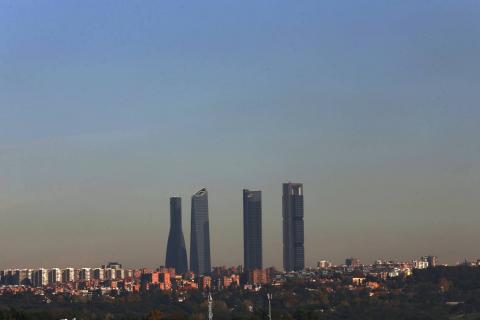Reactions: air pollution decreased in Europe in the last two decades, but increased by ozone in southern regions
Research led by ISGlobal and the Barcelona Supercomputing Center (BSC-CNS) shows that air pollution in 35 European countries - including Spain - has decreased in terms of levels of suspended particulate matter (PM2.5 and PM10) and nitrogen dioxide (NO2). However, ozone (O3) pollution increased in southern Europe, as shown by daily data collected between 2003 and 2019 and published in the journal Nature Communications. The study also looked at the number of days on which limits for two or more pollutants were exceeded simultaneously: despite improvements, 86.3% of the European population experienced at least one day with compound pollution per year.

Isidro Pérez - contaminación Europa EN
Isidro A. Pérez
Professor in the Department of Applied Physics and coordinator of the Atmospheric Pollution research group at the University of Valladolid
This article deals with concentrations of particulate matter (PM2.5 and PM10), NO2 and O3 in Europe and their evolution in the period 2003-2019. It is based on models that provide information with a detailed spatial resolution of 0.1 degrees. The authors highlight the evolution of both pollution days and the population living in clean areas. In addition, a geographical division of Europe is made to contrast the results in the different areas and, finally, the evolution of episodic situations, even composite ones, which may have a particular impact on the health of the population, is studied. It is therefore a very complete analysis, both in terms of the spatial scale and the period analysed, which determines its publication in a leading journal.
Although the authors of this analysis have emphasised the most striking results, it should not be forgotten that, without ignoring the usefulness of the models, there may be notable discrepancies with the measured data. For example, the sometimes significant dispersion between predicted and observed values is shown. In addition, concentrations or trends are presented following the administrative boundaries of provinces, whose size and population can change significantly from one country to another. These schemes may impact both the population and air quality managers, but they depart from the distribution of concentrations, as urban centres will be sources or sinks of concentrations, which will contrast with rural sites. O3 concentrations are also analysed, but only one of the precursors is considered. Volatile organic compounds are not presented, so it is risky to target control measures without this information.
Finally, the study of the evolution of episodic situations is correct. However, no distinction is made between cases of pollution of natural or anthropogenic origin, which limits decision-making on control measures.
Beatriz Cabañas - contaminación Europa EN
Beatriz Cabañas Galán
Professor in the Department of Physical Chemistry at the University of Castilla-La Mancha
Is the research of good quality?
"As the article mentions, it seems to be a robust method based on hundreds of data collected across Europe over a considerable period of time".
What would you highlight from their results?
"The decrease in NOx [nitrogen oxides] and particulate emissions, which has been observed in other pollution studies on the use of biofuels and so on. And the difficulty of reducing the concentration of tropospheric ozone given its 'multipathway' formation".
Are there any limitations to take into account?
"Not in terms of data processing, but the explanation, especially with regard to fine particles and ozone, is complex given the sources of formation of both. The chemistry of these processes needs to be further investigated.
How can PM2.5 and O3 levels be reduced, and do large fires play a role?
"Of course fires have an influence, and in recent years we have had major fires in Europe in particular, but other natural phenomena such as volcanoes (Iceland, La Palma, etc.) also play a role.
It is a complex issue and, as the article shows, we need to continue our research".
Zhao-Yue Chen et al.
- Research article
- Peer reviewed



